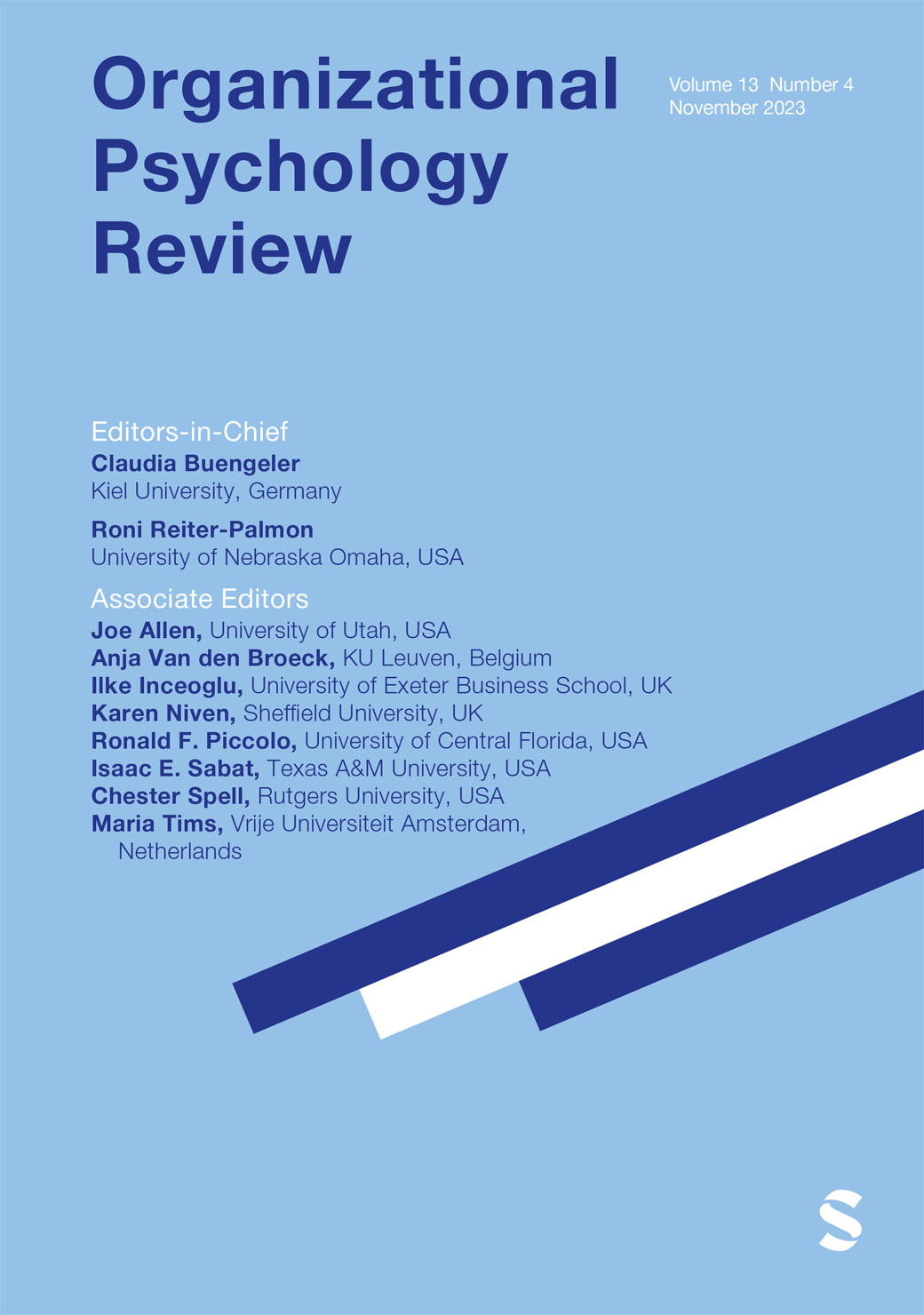Pursuing multiple goals during the commute: A dynamic self-regulatory perspective
IF 7.1
1区 心理学
Q2 MANAGEMENT
引用次数: 1
Abstract
The current review theorizes that self-regulatory principles can be applied to the commute experience to better understand how spatial navigation and role transition processes interface with each other. Using a multiple goal framework, spatial navigation and role transitions are conceptualized as simultaneous goals, each with their own set of effort allocation processes. Furthermore, the review describes how dynamic and stable features of the commute and of the different roles individuals enact come together to impact spatial navigation and role transition effectiveness, along with well-being and effectiveness in individuals’ “home” and “workplace” roles. The proposed framework offers novel predictions about how and why these two activities impact each other in different ways, providing testable propositions that will help researchers begin to better understand the commute as a time for multiple goal regulation. The review concludes with suggestions for future research aimed at investigating these processes. Plain Language Summary The commute represents a time when individuals are focused on physically moving from one location to another to meet the goal of arriving at one's destination in a safe and timely manner (Calderwood & Mitropoulos, 2020). At the same time, individuals may also have the goal of transitioning between roles, which involves mentally detaching from one role (e.g., deactivating goals involved with being a spouse) and reattaching to a second role (e.g., activating goals relevant to being an employee). As such, the current review views the commute as a time and place in which individuals may be striving for multiple goals that involve shifting attention and energetic resources between goals (Louro et al., 2007). The review uses a multiple goal framework (e.g., Louro et al., 2007) to explain how dynamic and stable features of the commute and of individuals’ roles come together to influence commute and role transition effectiveness and work and home outcomes. Further, the review concludes with suggestions for future research aimed at investigating these dynamic processes.通勤中追求多重目标:动态自律视角
目前的研究认为,自我调节原则可以应用于通勤体验,以更好地理解空间导航和角色转换过程是如何相互作用的。使用多目标框架,空间导航和角色转换被概念化为同时的目标,每个目标都有自己的一套努力分配过程。此外,本文还描述了通勤的动态和稳定特征以及个体扮演的不同角色如何共同影响空间导航和角色转换有效性,以及个体在“家庭”和“工作场所”角色中的幸福感和有效性。提出的框架提供了关于这两种活动如何以及为什么以不同方式相互影响的新颖预测,提供了可测试的命题,将帮助研究人员开始更好地理解通勤作为多目标调节的时间。本文最后提出了对未来研究这些过程的建议。通勤代表了个人专注于从一个地方到另一个地方的身体移动,以实现安全和及时到达目的地的目标的时间(Calderwood & Mitropoulos, 2020)。与此同时,个体也可能有角色转换的目标,这涉及到精神上脱离一个角色(例如,与成为配偶有关的目标失效),并重新连接到第二个角色(例如,激活与成为一名员工有关的目标)。因此,目前的研究将通勤视为一个时间和地点,在这个时间和地点,个人可能会努力实现多个目标,包括在目标之间转移注意力和精力资源(Louro et al., 2007)。该综述使用了一个多目标框架(例如,Louro等人,2007)来解释通勤和个人角色的动态和稳定特征如何共同影响通勤和角色转换有效性以及工作和家庭结果。此外,本文还对未来研究这些动态过程提出了建议。
本文章由计算机程序翻译,如有差异,请以英文原文为准。
求助全文
约1分钟内获得全文
求助全文
来源期刊

Organizational Psychology Review
Multiple-
CiteScore
10.00
自引率
1.60%
发文量
25
期刊介绍:
Organizational Psychology Review is a quarterly, peer-reviewed scholarly journal published by SAGE in partnership with the European Association of Work and Organizational Psychology. Organizational Psychology Review’s unique aim is to publish original conceptual work and meta-analyses in the field of organizational psychology (broadly defined to include applied psychology, industrial psychology, occupational psychology, organizational behavior, personnel psychology, and work psychology).Articles accepted for publication in Organizational Psychology Review will have the potential to have a major impact on research and practice in organizational psychology. They will offer analyses worth citing, worth following up on in primary research, and worth considering as a basis for applied managerial practice. As such, these should be contributions that move beyond straight forward reviews of the existing literature by developing new theory and insights. At the same time, however, they should be well-grounded in the state of the art and the empirical knowledge base, providing a good mix of a firm empirical and theoretical basis and exciting new ideas.
 求助内容:
求助内容: 应助结果提醒方式:
应助结果提醒方式:


